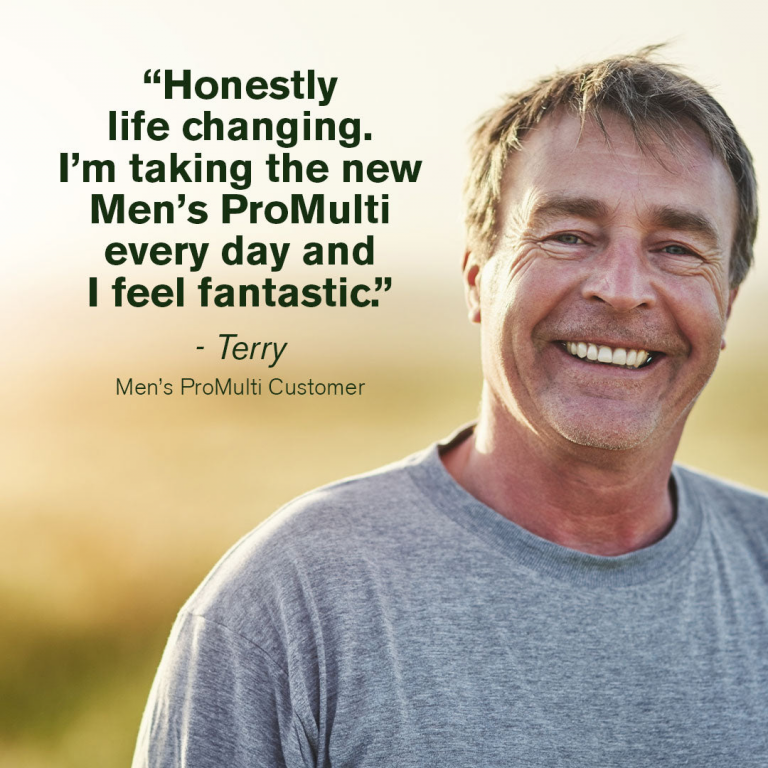
Electricity powers much of what we do every day, but it also takes a toll on the environment. The way energy is made often means burning fuels that harm the air we breathe and the wildlife around us. Choosing a greener energy supplier is a simple step that helps reduce this damage.
Small changes at home add up when many people switch to cleaner sources like wind or solar power. It’s a way to support nature without giving up comfort or convenience. In this post, you’ll find clear options to make your energy greener and why it matters for both your home and the planet.
The best way to reduce energy use is to live simply. This means less wind/solar farms and oil platforms are needed. Turning down the thermostat is not usually good advice, as it could cause hypothermia in vulnerable people and pets.
Industry regulator Ofgem says energy companies must by law return credit owed to you, within two weeks if you ask. If you switch energy suppliers, the old company still must refund remaining credit (if not, you can legally file a complaint).
For bereavements, as well as the account and meter readings, you will also need a copy of the death certificate, alongside details of family members of executors.
Ecotricity is the only supplier of green energy, that is not made with waste from the livestock industry (silage, manure, pig slurry). It even makes gas from grass! Like all energy companies, it’s not cheap. But at least you’re supporting a company that is trying to shake up the system, and not harming the planet or animals in the process.
Founder Dale Vince owns EcoTalk, a phone company powered by green energy that uses profits to buy land to conserve it for native wildlife.
A Simple Invention to Reduce Heat Loss
Radflek costs around £25 for a pack of three, the modern equivalent of sticking aluminium foil behind your radiator, to stop 95% of wasted heat energy going out through the wall into the fresh air. No DIY skills are needed to reduce heat loss by almost half (and bills too).
If using portable radiators, choose oil-powered ones that heat up slower but are more comfortable and safer than fast-blowing fan heaters (which can cause heatstroke for people & pets).
Made from laminated foil, Radflek is designed to last 5 years, with payback within months. The booster hangs from the wall brackets, if there are gaps between radiators and walls.
For brackets that sit higher, their FAQ page has answers for best fitting. The company can also supply for commercial use (hospitals, hospices and care homes).
Also read our post on switching to energy-efficient light bulbs.
How Greener Energy Changes Things
Switching to greener energy doesn’t just lower your bills or cut carbon emissions; it changes how we live alongside nature. Compared to fossil fuels, clean energy sources like wind, solar, wave, and geothermal use natural power without releasing harmful gases or waste.
This shift protects the air we breathe, preserves wildlife habitats, and builds stronger communities. Here’s how some of the main green energy types are helping both people and the planet thrive.
Solar Power and Community Panels
Solar farms if done wrong can incinerate creatures. And fossil fuels lead to oil-drilling which leads to oils spills and climate change (which affects all wildlife).
Ecotricity is focusing on bifacial solar panels, which make electricity from undersides by light reflected off the ground, so need less sun to work.
Oxford University’s Physics Department has recently created solar power, without silicon panels. Their light-absorbing material is for coating onto mobile phones, rucksacks and even vehicles.
Some solar farms are creating wildlife corridors and alternative fencing methods to try to keep wildlife away, and using repurposed mine land (over farms). Companies are also leaving surrounding areas to ‘rewild’ and avoiding mowing lawns during breeding seasons.
The sun is a large nuclear reactor that can release photons (pockets of energy) to create energy when photons hit solar panels (made from silicone dioxide – refined sand). Inverters change direct current (like from an AA battery) to alternating current (like from the grid).
Solar panels are now installed on 1 in 20 buildings in England, with quick payback times for schools, hospitals, prisons and large offices, that can sell excess energy back to the grid.
Modern systems have attached batteries, so can be installed on flat or sloping roofs to face any direction, and ‘store energy’ while you’re out, to use at night (watching TV, cooking, baths etc).
Any installation under 50 kilowatts should be conducted by an installer registered with MSC (Microgeneration Certification Scheme) the standards body for small-scale sustainable energy systems. This ensures installations are safe.
Wind Power: Help Birds and Bats Stay Safe
It’s true that sometimes wind turbines harm birds and bats, but things are getting better. There are now bladeless turbines (that vibrate in the wind). And in the Netherlands, it’s been found that painting one blade black, can help to reduce bird strike.
Beyond that, wind farms study bat patterns to schedule when turbines spin, often turning them off during peak bat activity. This is part of ongoing research and adjustments that balance clean energy with wildlife care. So, wind power isn’t just about blowing away fossil fuels. It’s about doing so thoughtfully, with wildlife in mind.
Wave and Geothermal power
Solar and wind often grab the spotlight, yet other green energy types quietly do their part. Wave energy comes from ocean currents and tides, creating power with minimal impact on marine life when done carefully. Meanwhile, geothermal energy taps heat from below the Earth’s surface to generate steady, reliable power day and night.
Both wave and geothermal reduce our need for fossil fuels, protecting habitats around power stations and in oceans. They work in places where sunlight or wind might not be enough, offering fresh options for green energy. Together with wind and solar, these technologies add layers of clean energy that safeguard wildlife and support healthier communities for years ahead.
What to Look for in Energy Suppliers

Choosing a greener energy supplier is not just about picking the cheapest deal. You want a supplier that truly provides cleaner energy, is transparent, and treats the planet with care. Many companies say they offer green energy, but their commitments can vary widely. Knowing what to watch for helps you pick a supplier you can trust and feel good about supporting.
Here’s a straightforward look at the key points to check when choosing your greener energy supplier.
Clear Proof That Energy Is Green
First off, make sure your supplier can prove where their electricity comes from. Some companies own their own wind farms, solar parks, or wave energy plants. This means the electricity you buy directly powers these clean sources, instead of being a claim on general green certificates.
Look for suppliers that provide clear evidence, such as:
- Independent audits or certifications on the energy mix.
- Details on the percentage of energy sourced from renewables.
- Information about ownership or partnerships with renewable generators.
If the website or customer letter doesn’t offer clear proof, be cautious. It’s easy to pay more for “green” energy that isn’t truly renewable.
Honest, Easy-to-Find Information
Good suppliers make their green commitments easy to find and understand. Their websites should have plain language explaining where the energy comes from, how they reduce emissions, and their stance on issues like waste and pollution.
Beware of vague claims or over-the-top buzzwords that don’t clarify anything real. The best ones will give you straightforward facts and allow you to check them yourself. If the details seem buried or confusing, it’s a sign to look elsewhere.
Watch Out for Hidden Fees
Price matters, even when going green. Some suppliers offer attractive rates but have hidden charges that catch you off guard later.
Common fees to watch for include:
- Extra interest or surcharges on direct debit payments.
- Exit fees for switching suppliers.
- Charges for paper billing or other “optional” services.
These fees can undo the savings you expect. Always check the full terms on their website and read reviews from other customers before signing up.
Suppliers That Support Cleaner Waste Management
Not all green suppliers just sell renewable electricity. Some go further by refusing to buy energy generated from burning waste or household rubbish in incinerators. Burning waste releases pollutants that harm wildlife and air quality.
Choosing a supplier that avoids incinerator energy means you’re supporting cleaner practices that protect creatures and communities. This is a detail not all suppliers highlight, but it can make a real difference.
Customer Service and Support
A greener supplier should care about you as well as the environment. Look for companies with good customer service, easy-to-reach help desks, and clear billing. When questions come up, you want friendly answers, not endless hold times or confusing policies.
Many green suppliers have strong community or environmental projects too. If you find one that shares updates and involves customers in events or programs, that shows real commitment beyond just selling energy.
Comparing Suppliers at a Glance
Here’s a quick checklist to keep on hand when looking through greener energy suppliers:
- Clear evidence of renewable energy sources.
- Transparent pricing with no hidden fees.
- No use of incinerator or waste-to-energy power.
- Good customer service and readable account info.
- Ownership or direct support of renewable farms.
- Environmental or community projects they support.
Taking a moment to check these will save you headaches and make sure your switch really helps the planet. Models that own the wind or solar farms they supply from often offer the purest green energy. When in doubt, look for that connection.
A greener energy supplier is not just about cleaner power; it’s about honest practices that align with your values and protect wildlife and the air we share. Keeping these points in mind makes your energy switch simple and confident.
What to Expect When Switching
Switching to a greener energy supplier might seem like a lot at first, but it’s usually straightforward and quick. Once you decide to make the change, you’ll find the process is designed to be easy. The good news is that your service won’t stop or flicker during the switch, and your home will continue to be powered just like before – only cleaner.
How to Switch in a Few Simple Steps
Switching energy suppliers usually takes just a few simple actions and often happens within a few weeks. Here’s what to expect:
- Compare options: Use comparison tools or check supplier websites to find the right green energy company at a fair price. Look for clear green credentials and honest pricing.
- Sign up: Choose your plan and provide your address, meter details, and payment preferences. You’ll also share your current supplier information to make the transfer smooth.
- Cooling-off period: You usually get a 14-day window after signing up to change your mind without penalty.
- Supplier handles the switch: Your new supplier will contact your old one and arrange the transfer. You do not lose power during this step.
- Final meter reading: Near the handover day, take a meter reading yourself or expect a visit. This reading settles your last bill with the previous company.
This process works the same whether you’re on a fixed price deal or a variable tariff.
Choosing the Right Payment Method Saves Money
Your payment plan affects what you pay overall. Fixed Direct Debit might seem popular, but some suppliers add hidden interest or fees for using this method. It also means that the company is making huge interest in pooled funds, before you pay.
Paying by annual or quarterly bill, or with a flexible method like credit/debit card, can sometimes save you money because you avoid these extra charges.
Avoid letting suppliers make extra money by holding onto your payments early. Paying in full or close to your actual use cut down those sneaky fees. It might mean keeping a close eye on bills and paying promptly when due, but it’s worth it for savings.
What to Look for on Your New Bills
When you get your first bill from the new supplier, it may look slightly different. Here are a few things to check:
- Meter readings: Make sure the bill is based on actual readings, not estimates. This avoids surprises later.
- Breakdown of charges: Look for a clear list of energy used, standing charges, VAT, and any fees.
- Green energy details: Some suppliers highlight the renewable portion of your supply or show how much you’re reducing emissions.
- Any new fees: Watch out for exit fees from your old supplier or start-up fees from the new one.
If anything looks odd or confusing, contact customer service. A reputable green supplier will be quick to explain and fix mistakes.
Your Service Will Stay the Same, Just Cleaner
Though you’re switching suppliers, the actual electricity still comes through the same wires to your home. You won’t lose power or need new equipment. The change is mostly behind the scenes—your chosen supplier buys energy from green sources rather than fossil fuels.
In short, you keep the same lights, heating, and appliances running without interruption. The only real difference is knowing your energy supports cleaner sources and a healthier planet.
What Happens If You Rent Your Home?
If you rent, your landlord or property manager might handle energy supply, so check with them first before switching yourself. Some rental agreements include energy supplier choices.
If you’re on a fixed contract with another company, switching early might mean paying an exit fee. Make sure to read your current contract terms. Sometimes waiting until the deal ends saves you money and avoids penalties.
Where to Find Help for Energy Bills
- Ensure you are claiming entitled benefits (most unclaimed benefits are for vulnerable people – just one phone call could see many older people get Pension Credit, which is worth £11,000 extra year, including Winter Fuel Allowance).
- AGE UK Warm Homes program can help to install radiator boosters, draught excluders and energy-efficient lightbulbs, and can also help with benefits. One caller with dementia (who had been turning off her eating to save money) ended up £9000 a year better off.
- British Gas Bounce Back List lists over 200 places to find help with bills and grants, and includes a list of warm space café.
Conclusion
Switching to a greener energy supplier is an easy way to make a real difference. Every choice to support wind, solar, or other clean energy helps reduce harm to wildlife and the planet. It also means a healthier home without changing how you live.
Take a moment to look for a supplier that offers clear proof of renewable energy, fair prices, and good service. Talk to friends or neighbours about community solar projects to spread the benefits further.






